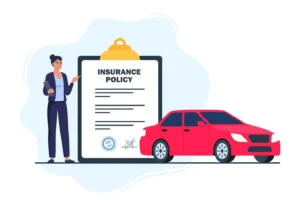The Factors That Impact Your Auto Insurance Premiums

Auto insurance premiums can vary significantly from one person to another. Have you ever wondered what factors influence these variations? In this comprehensive guide, we’ll delve into the numerous elements that impact your auto insurance premiums, shedding light on why your rates may differ from those of your friends or family members. Understanding these factors can help you make informed decisions and potentially save money on your auto insurance.
Contents
1. Introduction
Auto insurance is a necessity for drivers, providing financial protection in case of accidents, theft, or damage to your vehicle. While it’s a crucial safety net, the cost of auto insurance premiums can sometimes be a source of frustration. However, these premiums aren’t arbitrary; they are calculated based on several key factors, and understanding them can help you navigate the world of auto insurance more effectively.
2. Driving History
Your driving history is one of the most influential factors when it comes to determining your auto insurance premiums. Insurance companies use this information to assess the level of risk you pose as a driver.
2.1. Accidents and Violations
- Accidents: If you have a history of at-fault accidents, your premiums are likely to be higher. Conversely, a clean driving record can lead to lower rates.
- Traffic Violations: Moving violations such as speeding tickets or reckless driving convictions can also lead to increased premiums.
2.2. Driving Experience
- Experience Matters: Inexperienced drivers, especially young ones, often face higher premiums. As you gain more driving experience, your rates may decrease.
3. Vehicle Type
The type of vehicle you drive plays a significant role in determining your auto insurance premiums. Insurance companies consider various factors related to your vehicle.
3.1. Make and Model
- High-Performance Vehicles: Sports cars and high-performance vehicles typically have higher insurance premiums due to their increased risk of accidents and expensive repairs.
- Sedans and SUVs: Generally, sedans and SUVs are associated with lower insurance rates.
3.2. Safety Features
- Safety Features: Vehicles equipped with advanced safety features like anti-lock brakes, airbags, and electronic stability control may qualify for discounts.
4. Location
Your geographical location significantly impacts your auto insurance premiums. Insurance companies take into account local factors that affect risk.
5. Age and Gender
Age and gender can also influence your auto insurance premiums, although the impact varies by location and insurer.
6. Credit Score
In some regions, your credit score can impact your auto insurance rates. Insurance companies may use credit scores as a factor in determining risk.
7. Coverage Options
The type and amount of coverage you choose significantly affect your premiums. Comprehensive coverage, which provides more extensive protection, typically costs more than basic liability coverage.
8. Deductibles and Policy Limits
The deductible is the amount you pay out of pocket before your insurance coverage kicks in. Adjusting your deductible can impact your premiums.
9. Discounts and Savings
Many insurance companies offer discounts that can help reduce your premiums. Common discounts include those for safe driving, bundling multiple policies, or having anti-theft devices installed in your vehicle.
10. Shopping for the Best Rates
Shopping around for auto insurance is crucial. Obtain quotes from multiple insurers, compare coverage options, and consider the reputation and customer service of each company.
11. Conclusion
Auto insurance premiums are influenced by a multitude of factors, each contributing to the final cost. While some elements may be beyond your control, understanding these factors empowers you to make informed decisions and potentially save money. By maintaining a clean driving record, choosing your vehicle wisely, and exploring available discounts, you can take steps to manage your auto insurance costs effectively. Remember that finding the right balance between coverage and affordability is key to securing the protection you need while keeping your premiums manageable.









